Pallet Inverter: How to Handle Moisture-Sensitive Crop Pallets Safely?
Imagine a full pallet of valuable goods. It could be anything, but let's start with crops. The entire load, worth thousands of dollars, is ready for shipment. But there's a problem. The wooden pallet at the bottom got wet. It's weakening, molding, and compromising the entire shipment. This single point of failure now threatens your product, your schedule, and your bottom line. It's a frustrating, preventable, and costly problem that happens every day in warehouses around the world. But what if you could fix it in less than a minute, without touching a single bag or box?
The safest and most efficient way to handle moisture-sensitive crop pallets, or any compromised pallet, is by using a pallet inverter. This machine securely clamps the entire load, rotates it 180 degrees, and allows you to replace the faulty pallet with a new one. The entire process is mechanical, requires only one operator, and eliminates the risks associated with manual restacking, protecting both your product and your people.
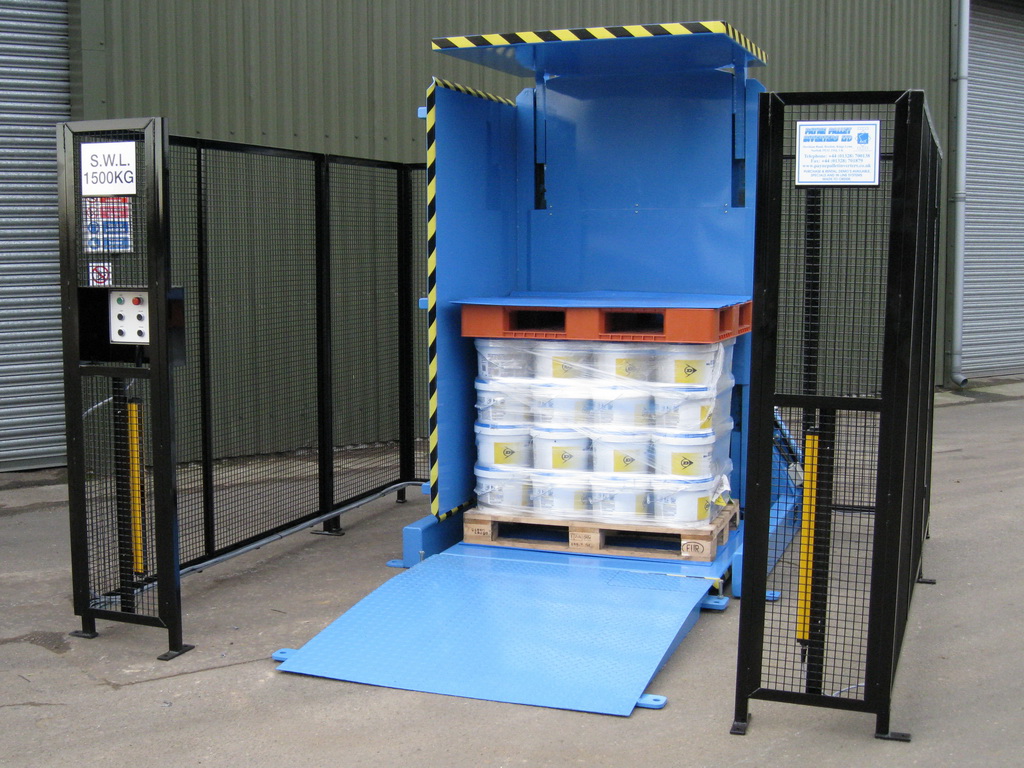
Now, you might be thinking, "Vincent, I run a steel mill, not a farm. Why are you telling me this?" It’s a fair question. I'm sharing this because the core problem—a single bad pallet threatening a valuable load—is universal. In my journey from a factory engineer to founding SHJLPACK, I've seen this exact issue cause massive headaches in steel plants. The product isn't crops, but maybe it's a pallet of expensive refractory bricks, imported spare parts, or bagged additives. The principle is identical. The solution is rooted in the same smart engineering. Let's explore how this thinking can protect your assets and boost your operational efficiency.
How can you prevent production stoppages caused by damaged pallets under heavy loads?
A pallet carrying two tons of critical spare parts or fire-resistant bricks collapses on its way to the furnace line. The entire area becomes a hazard zone. Production stops instantly. You're now facing hours of dangerous cleanup, potential damage to expensive components, and a significant hit to your plant's uptime. This is a recurring nightmare for any plant manager, and it often starts with a simple, aging wooden pallet that should have been replaced. The solution isn't just better inspection; it's a proactive system to remove the risk before it ever enters your critical workflow.
A pallet inverter or a dedicated pallet changer system is the most effective way to prevent these failures. By integrating a pallet transfer station at your receiving dock or at the entrance to your production zones, you create a mandatory quality gateway. An operator can quickly and safely invert a load, allowing for a thorough inspection of the pallet's integrity. If it's damaged, cracked, or simply not up to your standards, it can be replaced in under 60 seconds. This simple, proactive step transforms pallet management from a reactive problem into a controlled, preventative process, safeguarding your production schedule and your team.
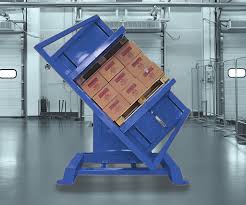
The True Cost of a Failed Pallet
For a CEO like you, Javier, every decision comes down to numbers and stability. A pallet inverter isn't just a piece of equipment; it's an insurance policy against unpredictable downtime. The cost of a single pallet failure goes far beyond the value of the goods on it. You have to consider the cost of idle machinery and the halted production line, which can run into thousands of dollars per hour in a steel mill. You also have the labor costs for the cleanup crew, who are pulled away from their primary duties. Most importantly, you have the immense safety risk of falling materials.
Let's break down the return on investment. A manual pallet swap is not a viable or safe solution for heavy industrial loads. It's slow, labor-intensive, and dangerous. A pallet inverter automates this process, turning a high-risk, multi-hour task into a low-risk, one-minute job for a single operator.
| Feature | Manual Pallet Replacement | Pallet Inverter / Changer |
|---|---|---|
| Time Required | 1-2 hours | < 2 minutes |
| Labor Required | 2-4 people + forklift | 1 operator |
| Safety Risk | Extremely High (Lifting, Instability) | Very Low (Machine Controlled) |
| Product Damage Risk | High (Dropping, Shifting) | Minimal |
| Impact on Uptime | Significant Downtime | Negligible Interruption |
By implementing a pallet inverter, you are directly addressing your goal of increasing equipment uptime to 95%. You are removing a common and unpredictable source of failure from your logistics chain. It’s a strategic investment in stability and a clear step towards reducing operational costs by eliminating the waste associated with accidents and downtime.
What is the most efficient way to switch incoming goods to plant-standard pallets?
Your suppliers send you essential materials—lubricants, additives, spare parts—on a wide variety of pallets. Many are cheap, one-way wooden pallets designed to survive a single journey. These pallets splinter, shed nails, and create debris that can contaminate clean production areas or jam sensitive automated equipment. Managing this inconsistent mix is an operational headache that slows down receiving and introduces unnecessary risk into your plant. The best solution is to standardize your entire facility on high-quality, reusable in-house pallets, and a pallet transfer system is the bridge that makes this transition seamless and efficient.
The most efficient method is to install a pallet changer or pallet inverter right at your receiving dock. When a truck arrives, the load is brought to the machine. A single operator can then transfer the entire stack of goods from the supplier's low-grade wooden pallet to one of your clean, durable, and standardized plastic or steel pallets in less than a minute. This simple action at the point of entry ensures that only high-quality, uniform pallets circulate within your plant, safeguarding your equipment and streamlining your internal logistics.
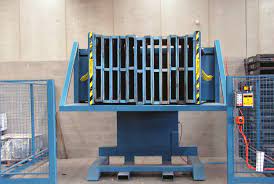
The Power of Standardization
For a forward-thinking leader focused on digitalization and efficiency, pallet standardization is a foundational step. Your goal to deploy MES, IoT sensors, and data analysis platforms relies on a predictable and consistent physical environment. Inconsistent pallets are a major source of error for automated systems. An AGV (Automated Guided Vehicle) or a sensor on a conveyor can't properly handle a pallet with a broken board or non-standard dimensions.
By standardizing, you unlock several key benefits that align directly with your strategic goals. The process of switching pallets using a machine is the enabler. It makes the entire concept practical and affordable. Think of it as creating a uniform "data packet" for your physical goods, allowing them to flow smoothly through the automated systems you plan to build.
| Benefit | Description | Impact on Your Goals |
|---|---|---|
| Automation Ready | Uniform size and shape ensures compatibility with conveyors, sensors, AGVs, and ASRS. | Directly supports Digitalization and Increases Uptime. |
| Enhanced Safety | Eliminates risks from splinters, protruding nails, and structural weaknesses of wood pallets. | Reduces operational costs and improves plant safety. |
| Waste Reduction | High-quality captive pallets last for years, reducing the waste and cost of disposable pallets. | Aligns with Environmental Goals and Lowers Costs by >8%. |
| Operational Speed | Goods move faster from receiving to the production line without manual handling or adjustments. | Increases Capacity Utilization and overall efficiency. |
Implementing this system isn't just about changing pallets; it's about taking control of your internal logistics, reducing variability, and laying the groundwork for a more automated, efficient, and profitable future.
How do you safely access and inspect the bottom of a palletized load without manual restacking?
A critical shipment of imported motor spares has arrived, but you suspect the boxes at the very bottom may have been damaged in transit. Or perhaps you need to check a date code or retrieve a single damaged bag of additives from the bottom of a full pallet. The traditional method is a logistical nightmare. It requires a team to manually unstack the entire pallet, box by box, perform the check, and then carefully restack it. This process is not only incredibly slow and inefficient but also introduces significant risks of worker injury and product damage. There has to be a better way.
A pallet inverter is the definitive solution for safe and immediate access to the bottom of any palletized load. The machine's powerful clamps secure the entire stack of products. It then rotates the load a full 180 degrees. The pallet that was on the bottom is now on top, completely accessible. You can inspect it, replace it, or remove a product. Once finished, the machine simply rotates the load back. What used to be a 30-minute, high-risk manual task becomes a one-minute, perfectly safe, machine-controlled process.
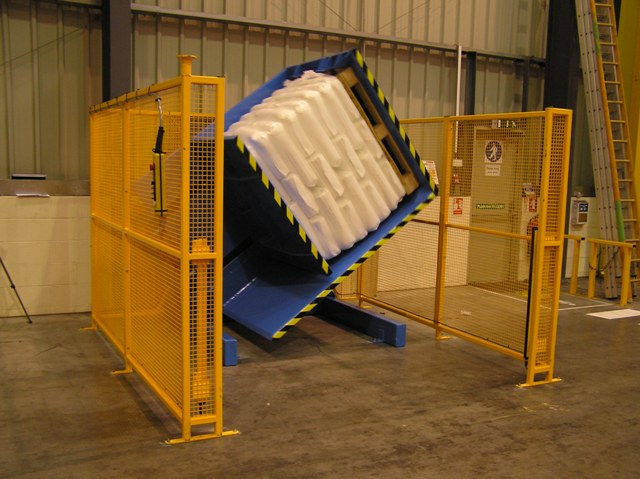
Turning Problems Upside Down
This capability is more than a convenience; it's a powerful tool for quality control and operational flexibility. In a complex operation like a steel mill, the ability to quickly solve small problems prevents them from becoming large ones. Think about the applications in your facility:
- Quality Assurance: Your receiving team can randomly sample and inspect items from the bottom of incoming pallets without disrupting the entire logistics flow. This ensures you are catching quality issues from suppliers before they enter your inventory.
- Order Fulfillment: If you need to retrieve a specific item or box from the bottom of a mixed pallet for a production order, you can do so without handling the entire stack.
- Damage Remediation: A forklift might damage a single bag or box at the bottom of a pallet. Instead of writing off the whole pallet or undertaking a risky manual unload, you can invert the load, remove the single damaged item, and save the rest.
This aligns perfectly with your goals of improving efficiency and reducing costs. Every hour of labor you save by avoiding manual restacking is a direct contribution to your bottom line. More importantly, every potential back injury you prevent by using a machine instead of manual labor is an invaluable investment in your workforce. The machine pays for itself not just in time saved, but in accidents that never happen. It is a simple, robust, and pragmatic solution to a very common and costly industrial problem.
How does this technology apply to core steel products like coils and wires?
This is the most important question. Pallet inverters are excellent for palletized goods like boxes, bags, and drums. But the heart of your business, Javier, is in massive, heavy steel coils and wires. How do you apply this principle of safe, mechanical handling to those products? A dropped steel coil is not just an inconvenience; it is a catastrophic event. And traditional handling methods are often the bottleneck in the entire packing and shipping process. The answer is that the core principle evolves. The technology adapts to handle the unique geometry and weight of your core products.
While you would not use a standard pallet inverter for a 20-ton steel coil, the engineering philosophy behind it gives birth to specialized coil tilters, also known as upenders. These powerful machines are designed to securely grip a massive steel or wire coil and safely reorient it by 90 degrees. They can take a coil from an "eye-to-sky" (vertical bore) position, which is often required for transport or storage, and tilt it to an "eye-to-the-wall" (horizontal bore) position. This reorientation is an essential step for feeding the coil onto a processing line or, critically, preparing it for a wrapping machine.
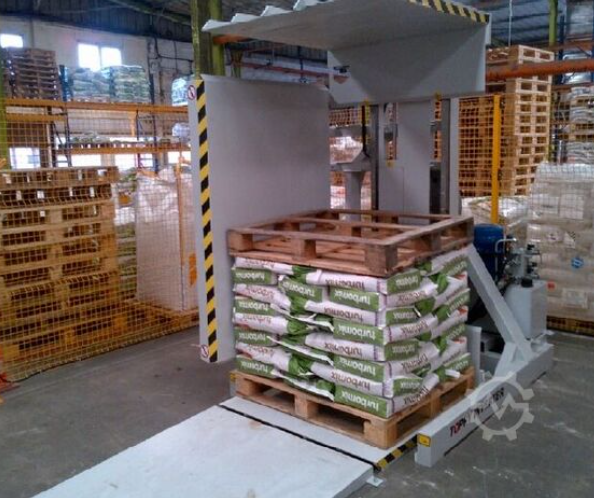
My Insights: From Handling Goods to a Total Solution
This is where my passion and SHJLPACK's mission come together. I remember working with a client, a steel processor much like you, who was struggling. Their production was fast, but their packing line was a bottleneck. They were moving coils with cranes and C-hooks, a slow and hazardous process, before manually wrapping them. It was a constant source of delays and safety concerns.
We didn't just sell them a machine. We looked at their entire process. The solution started with a coil tilter. By automating the process of upending the coil, we made it faster and infinitely safer. But we didn't stop there. We integrated the tilter with an automated conveyor system that fed the coil directly into one of our orbital stretch wrapping machines. The wrapping machine then applied a protective film to prevent moisture and corrosion during shipping. After wrapping, the coil moved to an automated strapping station before being taken away for dispatch.
We transformed their bottleneck into a streamlined, automated, and continuous flow. This is what I mean by a "TOTAL SOLUTION". It's not about one machine. It's about understanding how each piece of equipment works together to achieve your primary goals: higher throughput, lower labor costs, improved safety, and a better-protected product.
| Product Type | Handling Challenge | SHJLPACK Solution | Benefit for Your Steel Mill |
|---|---|---|---|
| Boxed/Bagged Goods | Damaged or Non-Standard Pallet | Pallet Inverter / Changer | ↑ Safety, ↓ Downtime, Automation Ready |
| Steel/Wire Coils | Reorientation for Packing/Processing | Coil Tilter / Upender | Enables Automated Packing, ↑ Safety & Speed |
| Finished Coils | Protection from Corrosion & Damage | Automatic Orbital Stretch Wrapper | Protects Product Value, Reduces Claims |
| Total Process Flow | Multiple Manual Handling Steps | Integrated Packing Line Solution | Achieves Digitalization & Cost Reduction Goals |
The technology that safely flips a pallet of crops is the grandfather of the technology that can safely tilt your most valuable steel coil. Understanding this evolution is key to seeing the opportunities for automation and efficiency throughout your entire plant.
Conclusion
From crops to coils, the principle is the same: smart equipment solves handling challenges, boosting safety, efficiency, and your bottom line. Let's build a total solution together.


